Through the years
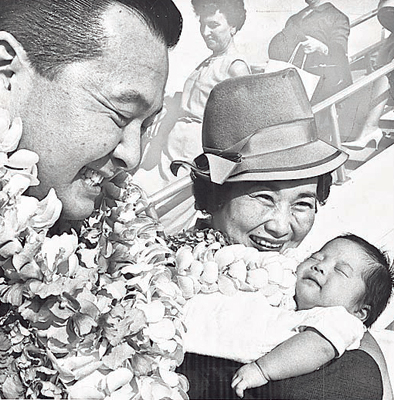
Inouye, his wife, Margaret, and his son, Ken, returned home to Hawaii for a visit in 1964.
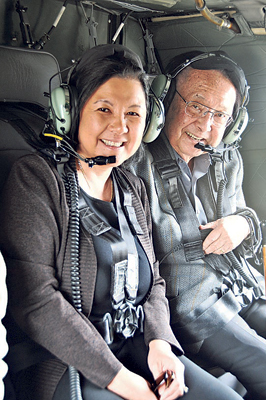
Inouye and his second wife, Irene Hirano.
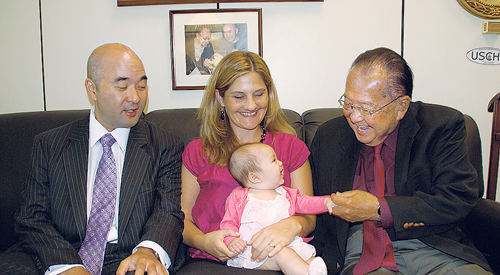
Inouye with son Ken, daughter-in-law Jessica Carroll and granddaughter Maggie.
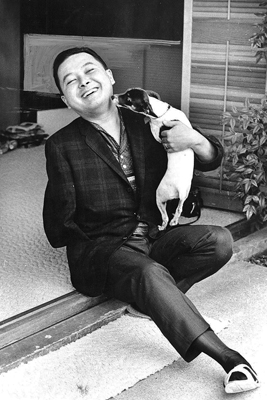
Inouye and Peanuts, one of his dogs.
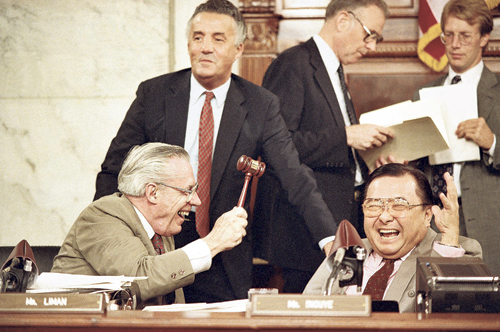
Rep. William Broomfield, R-Mich., pretends to rap Inouye during a break in the Iran-Contra hearings on Capitol Hill in Washington.
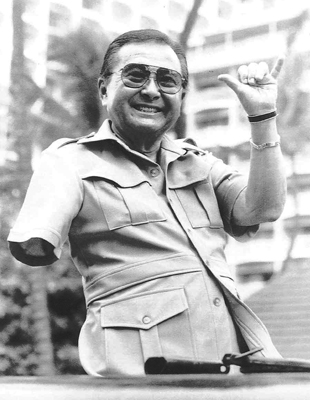
Inouye flashes a shaka during a parade in Honolulu commemorating the 50th anniversary of the attack on Pearl Harbor.
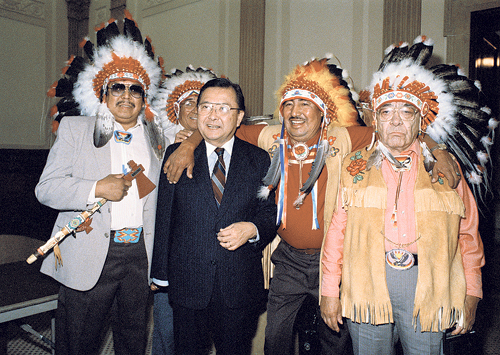
Members of the Red Lake Band of Chippewa of Minnesota meet with Inouye for a peace pipe ceremony to thank him for introducing legislation honoring their tribe.
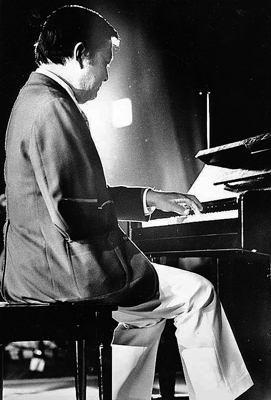
A lifetime member of the Musicians Union, Inouye plays his version of “Danny Boy” at his $100-a-plate fundraiser.








1899: Burdened with family debt, Asakichi Inouye and his wife, Moyo, agree to migrate from a village in Yokohama, Japan, to Hawaii as contract laborers and send money home to his parents. The Inouyes live at McBryde plantation in Wahiawa, Kauai, with their son Hyotaro. Hyotaro, who supported himself to receive a high school degree at age 25, worked as a file clerk for Theo H. Davies & Co. Ltd.
1923: Hyotaro Inouye marries Kame Imanaga, the daughter of a Japanese immigrant plantation field laborer. Imanaga, born to Japanese immigrants, became an orphan after her father’s death but was cared for by Hawaiian families, briefly by the church-run orphanage Susannah Wesley Home, then by the Rev. Daniel Klinefelter’s family, associated with the River Street Methodist Church.
Sept. 7, 1924: Daniel Ken Inouye is born in Honolulu, the oldest of four children, and raised as a Methodist. In his autobiography "Journey to Washington," Inouye described his family home on Queen Emma Street as "a teeming Japanese ghetto with two-family houses pressed one on the other…" His mother named him after the prophet Daniel and Klinefelter. His mother also shared with him the story about how Hawaiians had taken her into their home when she was an orphan, instilling in him an understanding and appreciation for the multi-ethnic community in Hawaii.
Dec. 7, 1941: Imperial Japan attacks military bases on Oahu, including Pearl Harbor. Inouye, 17, served as a Red Cross volunteer at Lunalilo School that day and later as a medical aide. Martial law is declared, and some 1,500 Japanese in Hawaii, mainly aliens, were arrested and confined in special compounds. Internment of Japanese residents was more widespread in the continental United States.
1942: Inouye graduates from McKinley High School. Inouye would later recall walking barefoot to school to save his shoes for special occasions.
Don't miss out on what's happening!
Stay in touch with breaking news, as it happens, conveniently in your email inbox. It's FREE!
1943: Inouye enlists in the U.S. Army, cutting short his medical studies at the University of Hawaii, after the United States allows Japanese-Americans to serve in the military. Inouye serves with E Company of the 442nd Regimental Combat Team, a group consisting of Americans of Japanese ancestry that would become the most decorated unit in U.S. military history. He is promoted to sergeant in less than a year.
October 1944: The 442nd rescues the Texas 141st Infantry Regiment surrounded by Germans in the Vosges Mountains in France. According to the U.S. Department of Defense, the rescue of the "The Lost Battalion" is recorded in U.S. military annals as one of the great ground battles of World War II. Two other Texas regiments had tried repeatedly and unsuccessfully to rescue the 141st, before the soldiers of the 442nd were called in to do the job. The 442nd rescued the 211 besieged Texans in three days of fighting that included hand-to-hand combat and left nearly half of its Japanese-American soldiers either dead or wounded. Inouye is promoted to lieutenant.
April 21, 1945: Inouye leads a charge against a series of German machine-gun nests on a hill in San Terenzo, Italy, and is severely wounded, forcing the amputation of his right arm. His actions during the battle earn him a Distinguished Service Cross, Bronze Star Medal and Purple Heart.
1946: In the rehabilitation hospital in Atlantic City where he is among whites rehabilitating from war injuries, Inouye begins learning to speak proper English, turning pidgin-English "dat" into "that," by an officer with a master’s degree in English. Another officer teaches him how to eat with silverware. He also begins reading literature by Joseph Conrad, Stephen Crane, Ernest Hemingway and Thomas Wolfe and learns about wine and how to play bridge. His education helps set the foundation for him to think seriously about running for political office, according to his autobiography "Journey to Washington." He meets Capt. Sakae Takahashi, a wounded veteran with another Japanese-American unit, the 100th Battalion, who became the first Asian in the Territory of Hawaii Cabinet. Inouye later serves as best man at Takahashi’s wedding.
Summer 1946: He moves to Battle Creek, Mich., to undergo training and study as part of his final rehabilitation.
May 1947: Inouye is honorably discharged as a captain after undergoing rehabilitation. During his stay at medical facilities, he meets Robert Dole and Philip Hart, wounded veterans who would also become U.S. senators.
1949: Marries Margaret Shinobu Awamura, a third-generation Japanese-American and a speech instructor at the University of Hawaii.
1950: Graduates with a bachelor’s degree in political science from the University of Hawaii.
1952: Graduates from the George Washington University School of Law in Washington, D.C. Returns to Hawaii and works as a deputy prosecuting attorney for the City and County of Honolulu.
1954: Elected to the Territorial House as one of many Democrats who wrest control of the Legislature from Republicans. With Inouye’s help, Sakae Takahashi founds Central Pacific Bank to provide loans to minorities, including Japanese-Americans.
1958: Elected to the Territorial Senate.
1959: Hawaii becomes the 50th state, and Inouye is elected as Hawaii’s first congressman. He is the first American of Japanese ancestry to serve in the U.S. House.
1962: Elected to the U.S. Senate, becoming the first American of Japanese ancestry to serve in the U.S. Senate.
1964: The Inouyes have a son, Daniel Ken Inouye Jr.
1967: Inouye publishes an autobiography about his early life, "Journey to Washington," with Lawrence Elliott.
1968: Delivers keynote address at the Democratic National Convention in Chicago.
1973-1974: Rises to national prominence as a member of the Senate Select Committee on Presidential Campaign Activities assigned to investigate the burglaries of the Democratic National Committee’s Watergate offices during President Richard Nixon’s 1972 re-election campaign. The committee plays an important role in confirming a White House cover-up that eventually leads to Nixon’s resignation.
1987-1989: Leads a committee investigating the Iran-Contra affair involving officials of President Ronald Reagan’s administration in the secret sale of arms to Iran to fund anti-Sandinista forces, or contras, in Nicaragua.
1993: Sponsors Title X, returning the island of Kahoolawe to the state of Hawaii. The legislation allowed the funding of some $400 million for the Navy to remove unexploded ordnance and other hazards and a plan to manage the reserve. The work from 1998 to 2003 was then the largest removal of ordnance ever done by the Navy.
June 21, 2000: Receives the nation’s highest military award, the Medal of Honor, for his actions in World War II along with 21 other Asian-American veterans.
2006: Inouye’s wife, Margaret, dies.
2008: Marries Irene Hirano, president of the U.S.-Japan Council, a nonprofit group in Washington.
Dec. 17, 2012: Inouye dies at 5:01 p.m. Eastern Standard Time (12:01 p.m. Hawaii time) at Walter Reed National Military Medical Center, with wife Irene, son Ken and wife Jessica, and granddaughter Maggie, at his side. His last word is "aloha."





